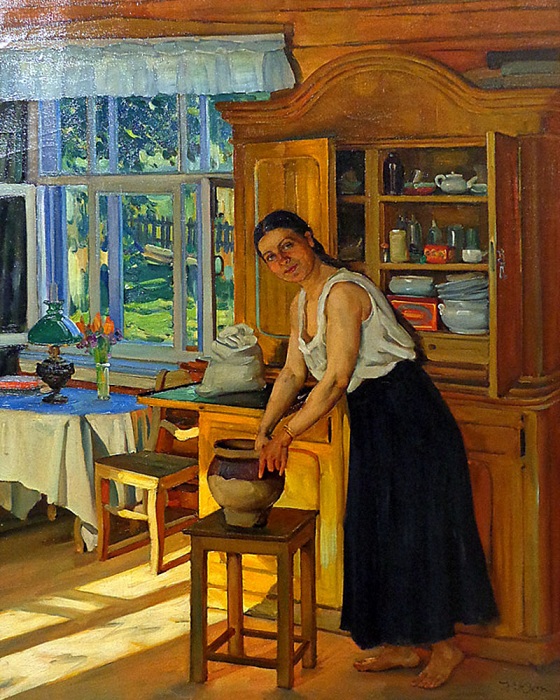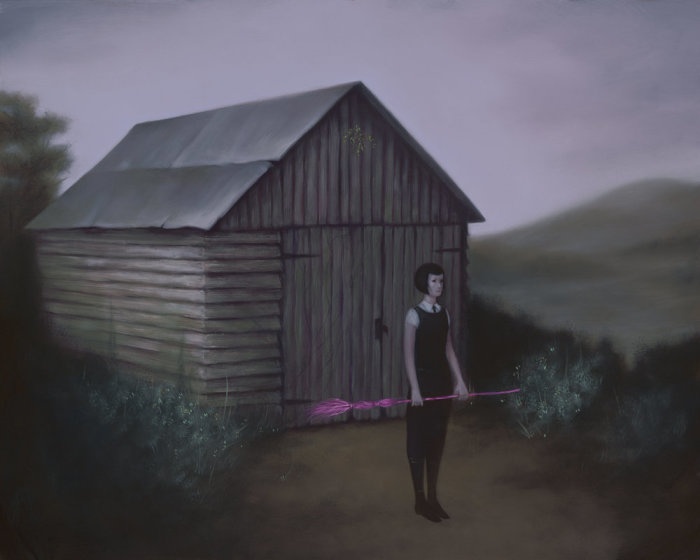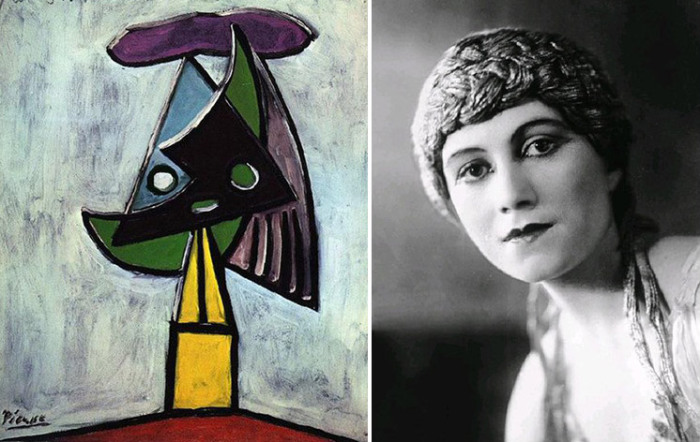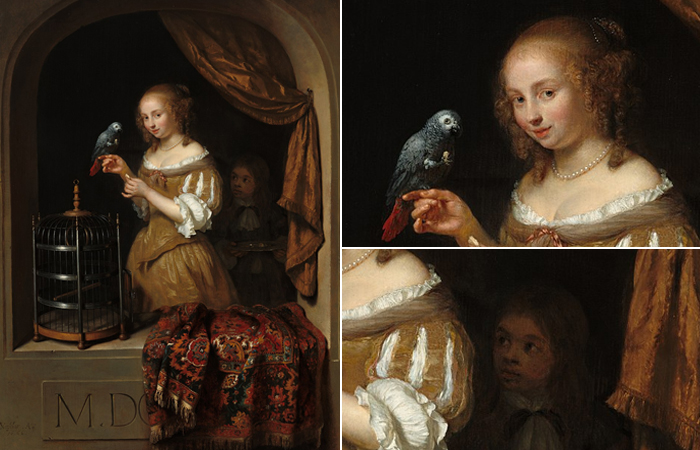Beloved woman of Boris Kustodiev, in whose name he overcame hellish pain and created his best works
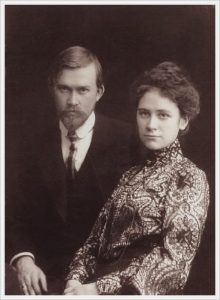 “Dear Yulik” – that’s what Boris Kustodiev called Yulia Proshinskaya, which was everything for the artist: a faithful and selfless wife, and the greatest love, and a devoted friend, and a muse-inspirer, and a guardian angel. She was an integral part of Boris himself, who, by the will of fate, ended up in a wheelchair. It was her courageous decision, when the question arose of what to keep her husband for life – arms or legs, allowed to extend for another 10 years the creative fate of the artist. And it was during this time that he created his best works, which were included in the golden fund of world art.
“Dear Yulik” – that’s what Boris Kustodiev called Yulia Proshinskaya, which was everything for the artist: a faithful and selfless wife, and the greatest love, and a devoted friend, and a muse-inspirer, and a guardian angel. She was an integral part of Boris himself, who, by the will of fate, ended up in a wheelchair. It was her courageous decision, when the question arose of what to keep her husband for life – arms or legs, allowed to extend for another 10 years the creative fate of the artist. And it was during this time that he created his best works, which were included in the golden fund of world art.
The talented painter fell not only great love, but also a difficult fate. Yes, and not only on himself, but also on the woman who walked a life path with him, despite the trials and troubles.
And today, in continuation of the theme of the wives of the great and famous masters of Russian painting – an amazing and heart-rending love story of the Kustodievs.
Fateful meeting
Julia Proshinskaya was born in the Polish family of a court adviser, who died very early. The girl’s mother, left without a livelihood, was little interested in the fate of her five children. Julia and her sister were taken up by the elderly Greek sisters from a wealthy family of Russified Englishmen who had their estate in Vysokovo. A few years later, a grown-up pupil was assigned to the Alexander School at the Smolny Institute. In winter, she lived in a government-owned apartment of the Ministry of Foreign Affairs, where her father worked until his death, and spent the summer in Vysokovo.
After graduating from college, Julia herself had to think about daily bread. She got a job at the St. Petersburg Committee of Ministers as a typist, and in parallel attended the school of the Society for the Promotion of Artists, where she learned the basics of fine art. And the summer months she still spent with her guardians on the estate.
Once, at the end of summer, three cheery-minded young people, unshaven, brightly dressed, like robbers, driving along a broken country road, decided to call in the Vysokovo estate. These were students of the Petersburg Academy of Arts, who came to visit the studies on a neighboring estate. It was here that the acquaintance of Yulia Proshina and Boris Kustodiev took place.
This courtesy visit to the old Greek women and their pupils turned out to be fatal for Boris, although in fact Julia conquered all three guys, everyone was ready to hit her without hesitation. Saying goodbye, young students received an invitation from the hostesses of the estate to visit them again sometime. And more than once then they came to Vysokovo. Boris, at the sight of a sweet and shy girl, lost his head, and when he met her gaze on himself, blood began to boil in his veins.
Departing to St. Petersburg, the future artist asks for permission to write letters to his beloved and she, of course, allows it. But the correspondence had to be kept secret for a long time, since the old Greek women were very disapproving of Yulenka’s romance with the beginning artist. They probably heard rumors about the property status of Boris, and they decided that with such a groom their pupil would have a hard time: besides vague hopes for the future, he had nothing for his soul. The idea that their Yulia could marry a poor “artist from the province” terrified the old Greeks, and they immediately began to pick up more worthy husbands candidates for the girl.
And then Boris still had almost three years before graduating from the academy, where five years of study had already passed, which caused only anguish in the heart. Kustodiev admitted to Yulia in letters: “We count the days when you leave these corridors, this boring barracks, where there is nothing alive, fresh, and you will finally break free, go out into the open space, to the land, forest, nature, you will breathe freely and begin to work something something so bright, joyful, young and beautiful. ”
By winter, Yulia Proshinskaya had to start the service, and, to the delight of Boris, she returned to Petersburg. Their meetings resumed and the young artist finally won the heart of his beloved, their mutual love entered a new phase.
For an artist who decided to devote himself entirely to art, love was not just a wonderful obsession. At night, he often wondered: “Will she share his passion for art, will he give her material wealth, will she accept it if he doesn’t come out of the workshop for weeks? Still, it’s hard to be the wife of an obsessed person.”
The girl, endowed equally with a tender soul and calm mind, realized: he was thinking about the future, about their joint future, and was ready for everything for him.
In 1903, young people get married, and soon Julia will give birth to Boris firstborn. And he, having graduated from the Academy of Arts, will receive a gold medal for competitive work and encouragement in the form of an annual retirement trip abroad, where he will go with his wife and newborn son. A young family settled in Paris, but the artist had to travel to Western European countries, study and copy the works of old masters.
